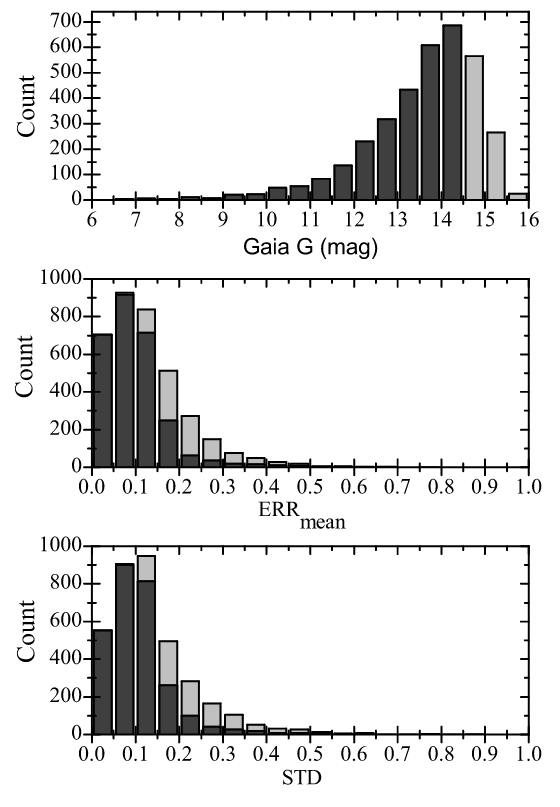Survey confirms 81 new variable stars
As a member of the AAVSO, variable star astronomy is near and dear to my heart. Astronomers at the Moletai Astronomical Observatory (MAO) in Lithuania recently submitted their results on the photometric variability analysis of 3,598 stars in the northern sky that revealed 81 new variable candidates. The authors state that the mission of MAO is
to deliver a full spectroscopic characterisation and variability information of the brightest stars in the northern sky.
Why would this be of importance? Well, one very significant reason would be to inform exoplanet searches such as NASA's Transiting Exoplanet Survey Satellite (TESS) and ESO's PLAnetary Transits and Oscillations (PLATO).
To this end, the astronomers used a 51 cm telescope with an Apogee CCD camera. This combination afforded the researchers a wide field of view (37.5 x 37.5 arcmin) and allowed for observation of bright stars without saturation. The survey covered about 5.85 square degrees of the sky and was subdivided into 13 fields. Each night 5 - 7 fields were observed. Naturally, the exposure time for each field varied depending on the brightness of the objects being observed. However, but the observing cadence produced between 9 - 15 images for each survey field every 15 - 30 minutes. The overall results are shown in Figure 1 below.

As you can see above in Figure 1's top panel, the magnitudes of the survey stars ranged from about 8th magnitude (brightest) to 16th magnitude (dimmest) with an average somewhere between 14-15 magnitude. The middle panel shows the average error the observation which is impacted by things like conditions in the atmosphere (e.g., weather). The bottom panel shows a histogram for the standard deviations. This is important for finding variables because researchers are looking at stars with higher standard deviations as potential variable stars (i.e., their magnitude is not constant so their standard deviation is larger).
Of the 3,598 stars imaged in the survey, 81 were identified as new (or newly confirmed) candidate variables. Each individual star was analyzed using special programs that search for periodicity in the data (e.g., Lombscargle). If a strong enough signal was found in the data, a light curve was constructed to see if the results made sense. For example, one particularly interesting finding was a newly confirmed eclipsing binary (TYC 2764-1997-1) and its light curve is shown below in Figure 2.

TYC 2764-1997 had previously been listed in the SIMBAD database as an unconfirmed eclipsing binary with a period of 7.8012 hours. The newly calculated period of 7.8028 hours is slightly longer suggesting that there may have been a loss of angular momentum due to mass transfer between the objects. These type of followup studies will continue to be invaluable not only to refine our understanding of each star system, but to inform future research in areas such as exoplanet searches.
References
Pakstiene, E. et al., 2019, https://arxiv.org/pdf/1902.06357.pdf
This post has been voted on by the SteemSTEM curation team and voting trail in collaboration with @utopian-io and @curie.
If you appreciate the work we are doing then consider voting all three projects for witness by selecting stem.witness, utopian-io and curie!
For additional information please join us on the SteemSTEM discord and to get to know the rest of the community!
Have you tested them on time series containing the price of crypto :D
periodicity is periodicity ...
I have not, but I bet somebody has.
Nah... That would be a complete overkill. You can see the future written in the stars anyway :D
I'm happy to see that astro community on Steemit is growing both in terms of quality and quantity.
Congratulations @ptsouth97! You have completed the following achievement on the Steem blockchain and have been rewarded with new badge(s) :
Click here to view your Board
If you no longer want to receive notifications, reply to this comment with the word
STOPDo not miss the last post from @steemitboard:
Hi @ptsouth97!
Your post was upvoted by Utopian.io in cooperation with @steemstem - supporting knowledge, innovation and technological advancement on the Steem Blockchain.
Contribute to Open Source with utopian.io
Learn how to contribute on our website and join the new open source economy.
Want to chat? Join the Utopian Community on Discord https://discord.gg/h52nFrV